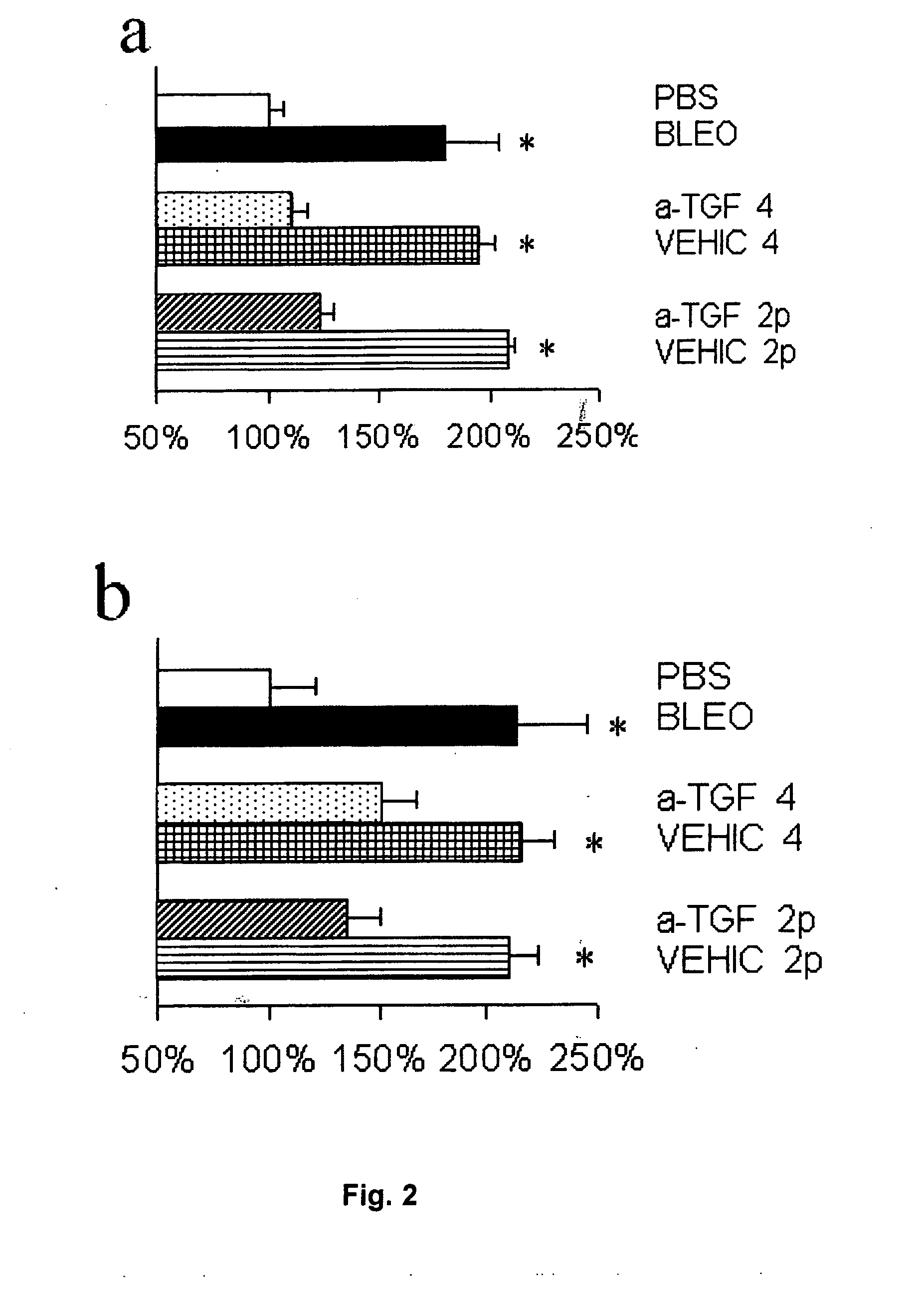Method for the treatment of skin fibrosis and suitable compositions for such treatment
- Summary
- Abstract
- Description
- Claims
- Application Information
AI Technical Summary
Benefits of technology
Problems solved by technology
Method used
Image
Examples
example 1
Antifibrotic Effect of P144 on Bleomycin-Induced Fibrosis: Histopathological Evaluation
[0052]Two emulsions or creams were prepared, an emulsion containing peptide P144 and a control emulsion with the vehicle for administration but without P144.
[0053]The control emulsion with the vehicle for administration was prepared by a procedure that starts with mixing of the components that are shown below in Table 2:
TABLE 2Composition of the lipophilic phase of the emulsionComponentAmount (g)Dimethicone 35010Liquid paraffin40Chlorocresol0.1Cetrimide0.5Cetostearyl alcohol5
[0054]Next, this mixture was heated at 70° C. and was emulsified with 44.4 g of distilled water (also at 70° C.).
[0055]The emulsion containing the P144 was prepared as previously, except that the 44.4 g of water was replaced with a mixture of 44.28 g of water plus 0.010 g of P144 previously dissolved in 100 μl of dimethylsulphoxide.
[0056]The test was carried out using 6-week-old female C3H mice, supplied by Harlan SL (Spain). ...
example 2
Characterization of the Cellular Effects of P144: Immunohistochemical Tests
[0066]For more extensive characterization of the cellular effects of neutralization of TGF-β1 with P144, various immunohistochemical studies were carried out, analysing the effect of the peptide on the development of myofibroblasts positive for α-SMA and the induction of SMAD2 / 3 in fibroblasts induced by bleomycin. For this, immunofluorescent staining was carried out (with an anti-smooth muscle α-actin (SMA) monoclonal antibody labelled with fluorescein isothiocyanate (FITC), supplied by Sigma) of skin sections obtained in the test described previously in Example 1, and the samples obtained were examined with an Axioplan-2 fluorescence microscope from Zeiss (Germany). FIG. 3 shows photographs obtained from samples corresponding to mice that were only injected with PBS (PBS), mice that had received injections of bleomycin for 4 weeks (BLEO), mice after topical administration of an emulsion that only contained ...
example 3
Antifibrotic Effect of P144 on Fibrosis Established by Injections of Bleomycin
[0071]To evaluate the effect of treatment of mice which already had an established fibrosis, a test was carried out similar to that described in Example 1, except that the mice did not receive any composition by the topical route in the four weeks during which they were administered injections of bleomycin. At the end of the four weeks, a topical composition was applied to the mice daily for two weeks before they were sacrificed: the emulsion containing P144 was administered to one group of mice, whereas the emulsion that only contained the vehicle for administration was administered to the other group. After the mice were sacrificed, skin samples were taken from the back in a manner similar to that described in the test in Example 1 and they were examined histologically and pepsin-soluble collagen was quantified following the procedures described previously in Example 1.
[0072]The photographs shown in the ...
PUM
| Property | Measurement | Unit |
|---|---|---|
| Fraction | aaaaa | aaaaa |
| Mass | aaaaa | aaaaa |
| Mass | aaaaa | aaaaa |
Abstract
Description
Claims
Application Information
 Login to View More
Login to View More - R&D
- Intellectual Property
- Life Sciences
- Materials
- Tech Scout
- Unparalleled Data Quality
- Higher Quality Content
- 60% Fewer Hallucinations
Browse by: Latest US Patents, China's latest patents, Technical Efficacy Thesaurus, Application Domain, Technology Topic, Popular Technical Reports.
© 2025 PatSnap. All rights reserved.Legal|Privacy policy|Modern Slavery Act Transparency Statement|Sitemap|About US| Contact US: help@patsnap.com



